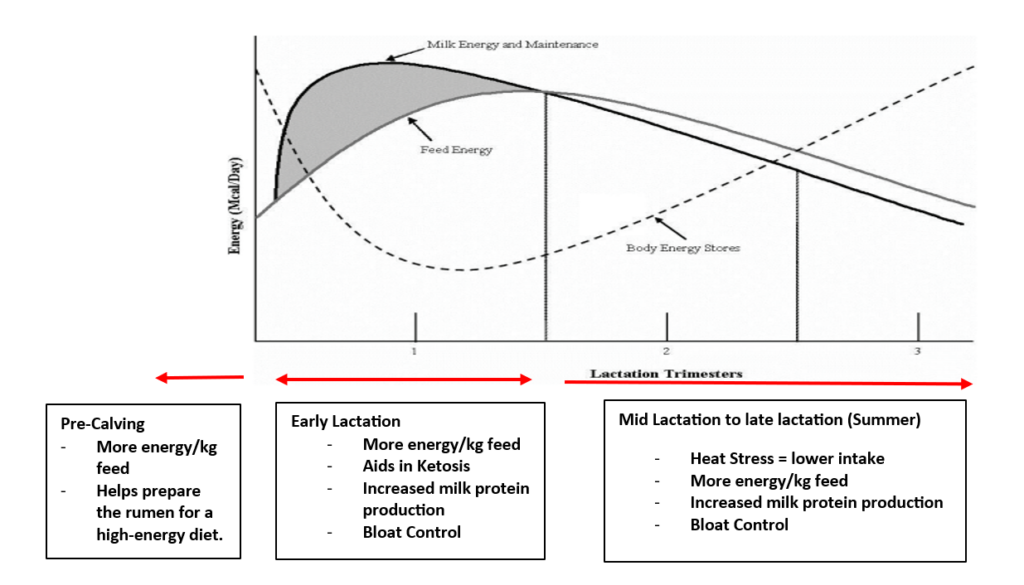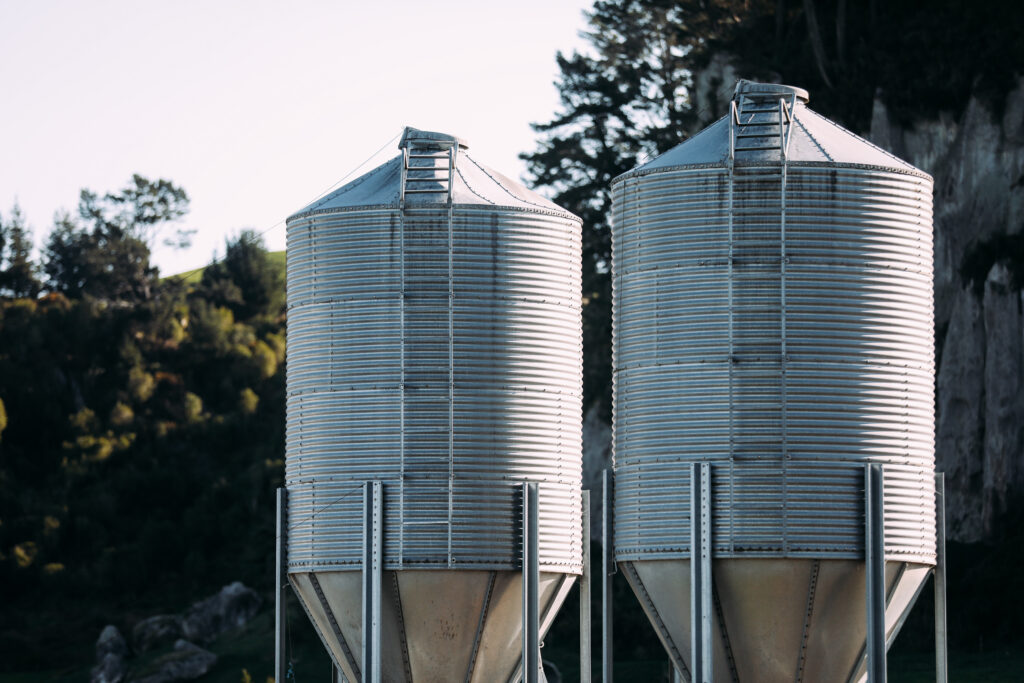We are living in times when there is a lot of pressure to ensure that we get as much value from feed (both supplement feed and pasture) to not only make our cows more efficient but also to improve their health and wellbeing. Therefore, farmers need to find ways and tools to assist their cows to become more efficient. Monensin is one such tool in the toolbox.
Monensin is one of the most well-known and well-researched feed additives in the world with 2,125 papers published in scientific journals and proceedings. This means that its effects are well documented across the world and production systems. Furthermore, all monensin products in New Zealand are ACVM registered for use in dairy cows.
What is Monensin and how does it work?
For us to understand how Monensin works and what it means for our cows we need to just take a brief refresher on what happens during fermentation in the rumen.
Cows and microbial organisms have a symbiotic (i.e. win/win) relationship: the cow provides an optimum environment for the microbes to live in in the form of the rumen & the microbes help digest the feed that the cow consumes through fermentation. This is what makes it possible for cows to consume high-fibre (such as pasture) diets.
When a cow consumes feed, the microbes digest the feed into 3 main energy components known as volatile fatty acids. These three volatile fatty acids are acetate, propionate, and butyrate. Acetate and propionate get absorbed and processed in the liver to the energy that the cow can use for production, maintenance, reproduction, etc.
Propionate extracts more energy from feed than acetate by capturing more carbon that can be converted to energy instead of lost to carbon dioxide or methane. Thus, propionate is like rocket fuel and acetate is 91-octane fuel.

Monensin is known as an ionophore and it works by altering the rumen microbe population to shift the acetate-to-propionate ratio so that there is an increase in propionate (rocket fuel) production and a decrease in carbon loss through methane and carbon dioxide, thereby increasing the metabolic energy value of the feed i.e., the same amount of feed + monensin = more energy from the feed.
Monensin works by exhausting the energy supplies of predominantly acetate-producing microbes (known as gram-negative bacteria) which means that they can’t reproduce. Therefore allowing the predominantly propionate-producing bacteria (known as gram-positive bacteria) to flourish and therefore increasing the amount of propionate being produced.
What will Monensin do for my cows?
There are many benefits to feeding Monesin in your diet, but the four main benefits are:
- Increased milk protein production
- Aid in reducing ketosis.
- Aid in the prevention of bloat
- Aid in the prevention of coccidiosis
A review done by Muller et al. (2006) showed that milk production was increased by up to 0.04kgMS/cow/day in pasture-based systems when Monensin was added to the diet. These findings are supported by a review by Duffield et al. (2008) who looked at 77 trials and commented that pasture-based herds had a greater production response than TMR (total mixed ration) – based herds.
If we put this in monetary terms it means that farmers can expect a Return On Investment of up to 7:1 (i.e. pay $1 get $7 back) on a $7/kgMS payout and with monensin costing $0.04/cow/day.
Furthermore, more energy available to the cow means that we are reducing the risk of her relying on her fat reserves to get her through times of energy deficit (such as early lactation when the cow is in a negative energy balance) and thus reducing the risk of ketosis.
When should I be feeding Monensin to my cows?
Monensin has benefits for the cow through the entirety of her lactation cycle. The biggest response is in times when a cow’s energy intake is low:
- When cows are in the springer mob and intakes are restricted due to less rumen volume to accommodate for the space that the growing calf is taking up in the uterus.
- During early lactation when cows are in a negative energy balance i.e. they do not have enough energy in their diet to support the level of milk they are producing and therefore start relying on their fat reserves.
- In periods of heat stress when feed intake is low as cows consume less feed when they are too hot.

Monensin and Levucell® SC
Levucell® SC (Saccharomyces Cerevisiae) is a natural and well-researched rumen-specific live yeast that optimises rumen pH (less acidosis) and increases fibre digestibility. Levucell®SC and Monensin work together as a team to improve rumen efficiency and research (Golder et al., 2014) has shown that when combined they not only improve production but also help in keeping the rumen environment healthy by:
- Improving rumen pH
- Reducing the production of histamines (a major cause of laminitis)
- Reducing the production of rumen ammonia (an indicator of poor microbial synthesis
Take Home Message
Monensin is an ACVM registered ionophore that alters the rumen microflora which causes an increase in the rumen propionate production (i.e. more rocket fuel). This means that monensin assists the cow to extract more energy per kg of feed which means she has more energy for production and maintenance.
Monensin is a great product with well-documented results that is an excellent tool that is available to assist farmers get more value from their feed, especially during times when energy intake in the cows is low such as during transition and early lactation.
Written by Christian Muller, Regional Feed Partner South/East Waikato.
0800 300 313
Sources
Duffield, T.F., Rabiee, A.R. and Lean, I.J., 2008. A meta-analysis of the impact of monensin in lactating dairy cattle. Part 1. Metabolic effects. Journal of dairy science, 91(4), pp.1334-1346.
Duffield, T.F., Rabiee, A. and Lean, I.J., 2012. Overview of meta-analysis of monensin in dairy cattle. Veterinary Clinics: Food Animal Practice, 28(1), pp.107-119.
Golder, H.M., Celi, P., Rabiee, A.R. and Lean, I.J., 2014. Effects of feed additives on rumen and blood profiles during a starch and fructose challenge. Journal of Dairy Science, 97(2), pp.985-1004.
Muller, L.D., Bargo, F. and Ipharraguerre, I.R., 2006. Monensin for Grazing Dairy Cows. The Professional Animal Scientist, 22(2), pp.115-119.



